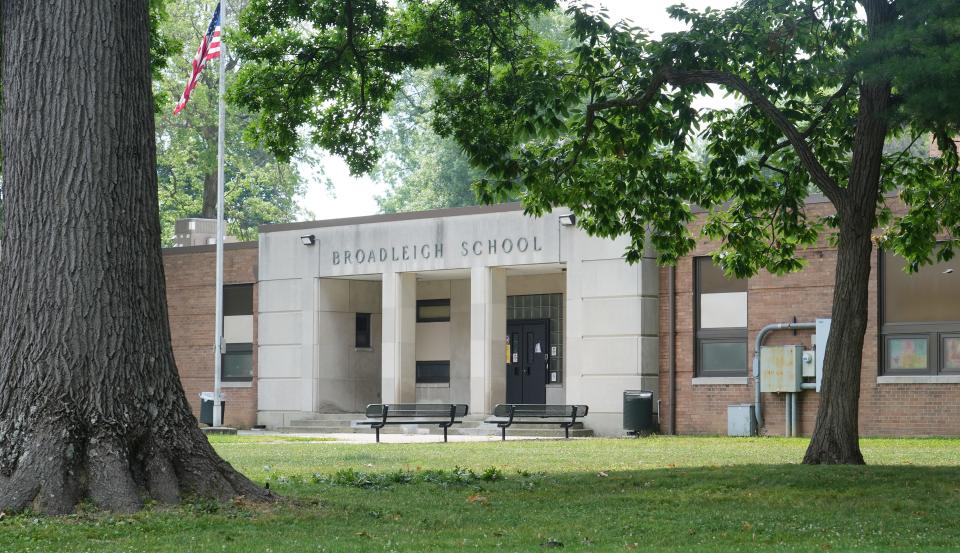Columbus City Schools could close as many as nine schools in the coming months.
In June, the Superintendent’s Facilities Task Force recommended at a Columbus City school board meeting that the board consider closing six elementary schools, two middle schools and a high school building in the state’s largest district, which has over 110 buildings. That’s 11 schools fewer than what the the task force presented in May, where up to 20 possible school buildings could have been closed under nine initial scenarios. Since announcing the proposed finalists, the board has been on break and is set to return on Tuesday.
While there were originally 20 schools on the list, some schools initially recommended for closure such as Cranbrook and Siebert Elementary schools, which all have high English as a Second Language (ESL) programs, were not put forward in the final recommendations because of the challenges presented with transitioning students, Superintendent Angela Chapman previously told The Dispatch.
While the board has been on a July recess, it is set to return this week with a scheduled Tuesday meeting at 6 p.m. The board is expected to resume discussions around school closures. District spokesperson Jaqueline Bryant told The Dispatch that final recommendations will be voted on at a later, undetermined date by the board.
“A timeline for implementation of board-approved changes is yet to be determined,” Bryant said in an email.
Here’s your guide to schools on the final list of proposed closures:
See the schools on a map:
View an interactive map of each of the nine school buildings proposed for closure in Columbus City Schools.
Broadleigh Elementary School

Students would be redistributed among Eastgate, East Columbus, and Fairmoor elementary schools. The task force said the transition will maintain the quality of education and provide students with a broader range of academic and extracurricular opportunities.
Facts about the school:
-
Year opened: 1952
-
Utilization: 66.5% (266 students out of 400 capacity)
-
State report cards: Three stars overall; three stars in progress
-
English Language Learners: 29.4%
-
Chronic absenteeism: 44.2%
Buckeye Middle School


Students would move to Marion-Franklin High School, creating a 6-12 grade site.
Facts about the school:
-
Year opened: 1962
-
Utilization: 72.6% (365 students out of 503 capacity)
-
State report cards: Two stars overall; two stars in progress
-
English Language Learners: 4.9%
-
Chronic absenteeism: 77.8%
Columbus City Preparatory School for Boys


Students would join the Columbus City Preparatory School for Girls.
Facts about the school:
-
Year opened: 1962
-
Utilization: 23.2% (100 students out of 431 capacity)
-
State report cards: Two stars overall; three stars in progress
-
English Language Learners: N/A
-
Chronic absenteeism: 61%
Fairwood Alternative Elementary School


Students would be moved to Ohio Avenue or Livingston elementary schools.
Facts about the school:
-
Year opened: 1924
-
Utilization: 46.5% (186 students out of 400 capacity)
-
State report cards: three stars overall; 2.5 stars in progress
-
English Language Learners: N/A
-
Chronic absenteeism: 66.1%
Lindbergh Elementary School


Students would be redistributed among Binns, Burroughs, and West Mound elementary schools.
Facts about the school:
-
Year opened: 1958
-
Utilization: 78.7% (236 students out of 300 capacity)
-
State report cards: 3.5 stars overall, five stars in progress
-
English Language Learners: 6.4%
-
Chronic absenteeism: 48.7%
McGuffey Road Facility (Columbus Alternative High School building)


Columbus Alternative High School would move its programming to East High School, which would remain open, and CAHS would share space in the building.
Facts about the school:
-
Year opened: 1926
-
Utilization: 84.5% (764 students out of 904 capacity)
-
State report cards: Four stars overall; four stars in progress; four stars in graduation
-
English Language Learners: 6.9%
-
Chronic absenteeism: 51.7%
Moler Elementary School


Students would be moved to Lincoln Park or Livingston elementary schools.
Facts about the school:
-
Year opened: 1967
-
Utilization: 65.5% (311 students out of 475)
-
State report cards: 2.5 stars overall, 3 stars in progress
-
English Language Learners: 5.9%
-
Chronic absenteeism: 68.8%
North Linden Elementary School


Students would be redistributed among Huy, Maize, Innis, or Northtowne elementary schools.
-
Year opened: 1949
-
Utilization: 82.5% (330 students out of 400 capacity)
-
State report cards: 2.5 stars overall; three stars in progress
-
English Language Learners: 54.4%
-
Chronic absenteeism: 44.4%
West Broad Elementary School


West Broad, alongside Lindbergh and Valleyview elementary schools, would consolidate with other area elementary schools under one proposal. West Broad Elementary is on the West Side.
-
Year opened: 1914
-
Utilization: 65.5% (360 students out of 550 capacity)
-
State report cards: 2.5 stars overall; three stars in progress
-
English Language Learners: 23.5%
-
Chronic absenteeism: 67.6%
This article originally appeared on The Columbus Dispatch: Here are facts about the Columbus City schools proposed for closure
Source Agencies

